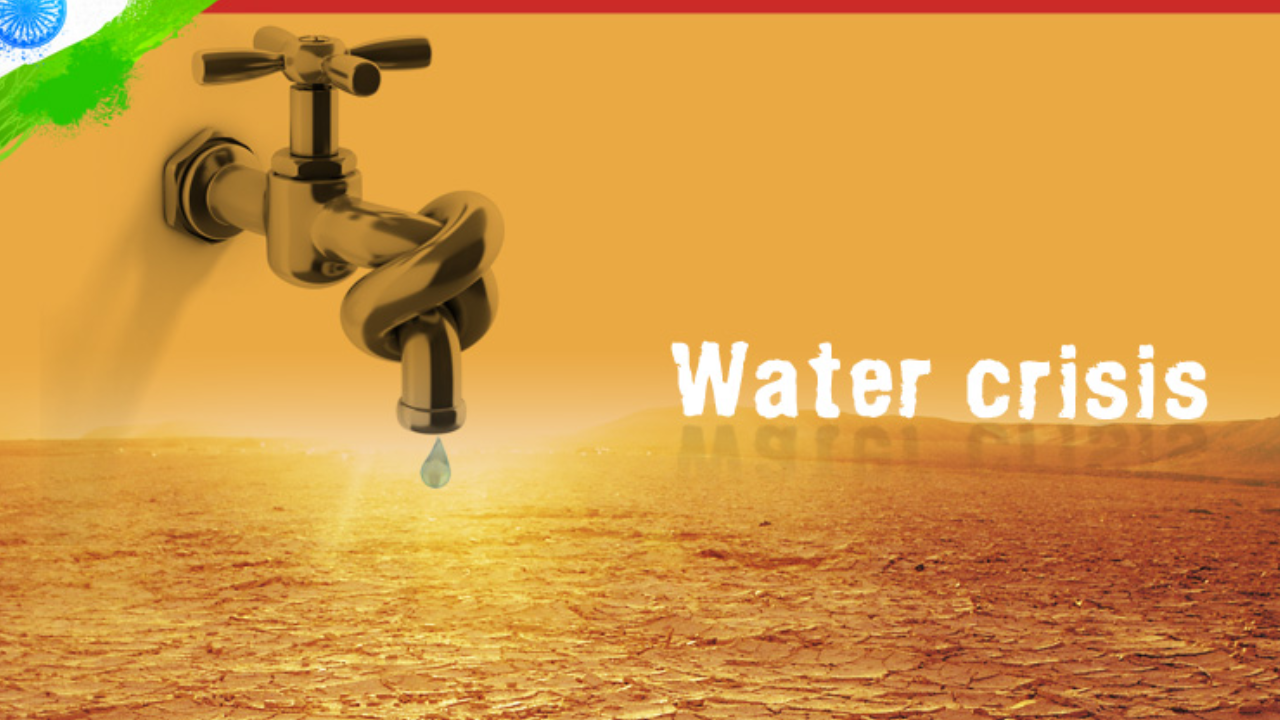Water, the elixir of life, is a precious resource facing a growing crisis in India. With a population exceeding 1.4 billion and uneven distribution of water resources, India is classified as “water-stressed” by the World Resources Institute. This blog series, in two parts, explores the complexities of India’s water crisis and delves into innovative technologies offering a glimmer of hope for a more sustainable future.
The Severity of the Situation:
- Dwindling Resources: India’s per capita water availability has been steadily declining for decades, reaching alarmingly low levels. Climate change, erratic rainfall patterns, and overexploitation of groundwater resources are major contributors.
- Unequal Distribution: Water scarcity is not uniform across the country. Regions like Rajasthan, Gujarat, and parts of Maharashtra face severe water shortages, while some areas experience floods during monsoon seasons.
- Impact on Agriculture: Agriculture, the backbone of India’s economy, is heavily reliant on water. Water scarcity threatens food security and rural livelihoods.
- Urban Challenges: Rapid urbanization has placed immense strain on water resources in cities. Issues like leaking pipelines, inadequate infrastructure, and pollution further exacerbate the problem.
The Need for Innovative Solutions:
The traditional approach of relying solely on large-scale dams and irrigation projects is proving insufficient. To address the water crisis effectively, India needs to embrace innovation at all levels. Here’s where cutting-edge technologies come into play:
Three key areas where innovation is transforming water management:
- Water Conservation Technologies:
- Precision Irrigation: These techniques, like drip irrigation and micro-irrigation, deliver water directly to the root zone of plants, minimizing evaporation and maximizing water efficiency in agriculture.
- Smart Meters and Sensors: Real-time monitoring of water usage through smart meters and sensors empowers individuals and farmers to optimize water consumption and identify leaks.
- Greywater Recycling: Greywater, used water from household activities excluding sewage, can be treated and reused for non-potable purposes like watering gardens or flushing toilets.
- Wastewater Treatment and Reuse:
- Advanced Wastewater Treatment Technologies: Innovative technologies like membrane filtration and constructed wetlands enable efficient treatment of wastewater, making it suitable for reuse in irrigation or industrial applications.
- Decentralized Wastewater Treatment Systems: These compact systems treat wastewater at the source, reducing reliance on centralized infrastructure and providing a sustainable solution for smaller communities.
- Rainwater Harvesting and Groundwater Management:
- Rooftop Rainwater Harvesting: Capturing rainwater from rooftops and storing it for later use is a simple yet effective way to conserve water, particularly in urban areas.
- Aquifer Recharge: Techniques like artificial recharge structures facilitate replenishment of groundwater resources, promoting sustainable water management.
The Importance of a Multi-pronged Approach
Technological innovation is a crucial piece of the puzzle. However, a holistic approach is essential to address India’s water crisis effectively. This includes:
- Policy and Regulatory Reforms: Strengthening water conservation policies, promoting efficient water pricing mechanisms, and incentivizing adoption of water-saving technologies are critical steps.
- Public Awareness and Behavioral Change: Educating the public on the severity of the water crisis and promoting responsible water use behaviors are vital for long-term success.
- Community Participation: Encouraging community-based water management initiatives empowers local communities to take ownership of their water resources.
A Beacon of Hope: Innovative Technologies and Success Stories Illuminating India’s Water Future
We saw the gravity of India’s water crisis and critical role of innovation in addressing this challenge. Now, let’s delve into additional innovative solutions and inspiring success stories that offer a glimmer of hope for a more water-secure future.
Expanding the Innovation Landscape:
- Desalination: While energy-intensive, desalination technologies are increasingly being explored as a viable option for treating seawater and brackish water in coastal regions. Advancements in renewable energy integration can make desalination more sustainable.
- Fog Harvesting: Fog harvesting systems capture moisture from fog using specialized nets or mesh structures. This technology holds promise in arid regions where fog is prevalent.
- Cloud Seeding: Cloud seeding techniques involve introducing aerosols into clouds to promote precipitation. While this technology is still under development, it has the potential to enhance rainfall in certain areas.
Success Stories: Inspiration for Change
Across India, communities and organizations are implementing innovative solutions to tackle water scarcity. Here are a few inspiring examples:
- Arvind Kejriwal Government’s Delhi Jal Board Initiative: The Delhi Jal Board successfully reduced non-revenue water (water lost due to leaks and pilferage) by 33% through a multi-pronged approach, including leak detection and repair, smart metering, and public awareness campaigns.
- Rainwater Harvesting in Chennai: The city of Chennai has witnessed a significant revival of traditional rainwater harvesting practices. Rooftop harvesting systems and community-managed rainwater tanks are contributing to improved water security.
- Drip Irrigation Revolution in Maharashtra: Maharashtra has witnessed a remarkable shift towards drip irrigation in agriculture, leading to substantial water savings and increased crop yields. Government subsidies and farmer training programs have played a crucial role in this success story.
The Road to Water Security
India’s water crisis cannot be solved by a silver bullet solution. A combination of innovative technologies, policy reforms, public awareness, and community-driven initiatives is necessary. Here’s what you can do:
- Embrace Water-Saving Practices: Simple changes in daily habits, like taking shorter showers, fixing leaky faucets, and reusing greywater, can create a significant impact.
- Support Sustainable Businesses: Choose products and services from companies committed to water conservation practices.
- Spread Awareness: Educate your family, friends, and community about the water crisis and inspire responsible water use behaviors.
India Pavilion: Leading the Way Towards a Sustainable Water Future
India Pavilion is actively engaged in promoting water conservation and innovation. We contribute by:
- Showcasing Innovative Solutions: We provide a platform for startups and companies developing cutting-edge water technologies to showcase their innovations on a national and international stage.
- Facilitating Knowledge Sharing: We organize events and workshops that bring together stakeholders – policymakers, industry experts, and community leaders – to share knowledge, best practices, and success stories.
- Advocating for Sustainable Policies: We advocate for policies that incentivize water-saving technologies, promote rainwater harvesting, and encourage responsible water management practices.



